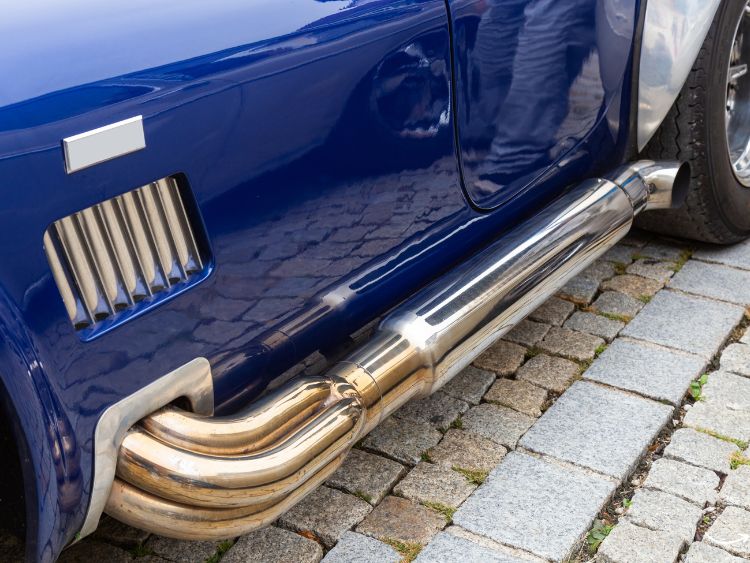Ever found yourself dealing with a leaky exhaust system? It’s one of those car troubles that can sneak up on you and cause a ruckus if not addressed promptly. That’s where an exhaust system sealant comes into play. This handy product can save you time, money, and a whole lot of hassle by providing a quick fix to leaks and cracks in your vehicle’s exhaust system. But what exactly is an exhaust system sealant, and how does it work? Let’s dive into the nitty-gritty and uncover everything you need to know about this automotive lifesaver.
What is an Exhaust System Sealant?
The Basics
An exhaust system sealant is a specially formulated adhesive designed to repair leaks and cracks in your vehicle’s exhaust system. Unlike regular adhesives, these sealants can withstand the high temperatures and corrosive gases that flow through your exhaust pipes. They’re typically used to fix small holes, cracks, or gaps where sections of the exhaust system join together.
How It Works
When applied to a clean surface, the sealant cures to form a durable, heat-resistant bond. This bond effectively seals any gaps, preventing exhaust gases from escaping. The best part? You don’t need to be a mechanic to use it. Most products come with easy-to-follow instructions, making it a go-to solution for DIY enthusiasts.
Why Use an Exhaust System Sealant?
Cost-Effective Solution
One of the biggest advantages of using an exhaust system sealant is its cost-effectiveness. Instead of shelling out big bucks for a complete exhaust system replacement, a tube of sealant can fix minor issues for a fraction of the price.
Easy to Use
Got a wrench and a clean rag? Then you’re all set to apply an exhaust system sealant. It’s a straightforward process that doesn’t require any special tools or expertise. Clean the area, apply the sealant, and let it cure. Voilà! Your exhaust system is as good as new.
Quick Fix
Time is money, and a leaky exhaust can be a time-consuming problem. An exhaust system sealant offers a quick and efficient fix, allowing you to get back on the road without a lengthy repair process.
Environmentally Friendly
A leaky exhaust system isn’t just a nuisance; it’s also harmful to the environment. By sealing up leaks, you reduce the amount of harmful gases released into the atmosphere, making exhaust system sealants an eco-friendly choice.
Types of Exhaust System Sealants
High-Temperature Silicone Sealants
These sealants are made from silicone and are designed to withstand extreme temperatures. They are flexible and can handle the constant expansion and contraction of the exhaust system.
Epoxy-Based Sealants
Epoxy sealants form a hard, durable bond once cured. They’re ideal for larger cracks and holes but may be more challenging to apply due to their rigidity.
Metal-Infused Sealants
Some sealants are infused with metal particles to enhance their strength and heat resistance. These are perfect for high-stress areas of the exhaust system.
Tape Sealants
For those who prefer a mess-free application, tape sealants offer an easy solution. These adhesive tapes are wrapped around the affected area and provide a temporary fix until a more permanent repair can be made.
How to Apply an Exhaust System Sealant
Step-by-Step Guide
- Clean the Area: Ensure the surface is free from dirt, grease, and rust. Use a wire brush or sandpaper to prepare the area.
- Apply the Sealant: Following the product instructions, apply the sealant generously over the leak or crack.
- Smooth it Out: Use a spatula or your finger to smooth out the sealant, ensuring it covers the entire area.
- Let it Cure: Allow the sealant to cure for the recommended time. This usually ranges from a few hours to overnight.
- Check the Repair: Once cured, start the engine and check for any leaks. If necessary, apply additional sealant.
Tips and Tricks
- Work in a Well-Ventilated Area: Exhaust fumes can be harmful, so ensure you’re working in a well-ventilated space.
- Wear Protective Gear: Gloves and safety glasses are a must to protect yourself from any splashes or fumes.
- Double Check: After curing, double-check the repair to ensure no leaks remain. A second application might be necessary for larger cracks.
Common Issues and Solutions
Sealant Not Curing Properly
If the sealant isn’t curing as expected, it might be due to low temperatures or high humidity. Ensure the environment is suitable for curing as per the product instructions.
Persistent Leaks
If the leak persists after applying the sealant, the crack might be too large for a sealant alone. In such cases, consider using a combination of sealant and exhaust tape or consulting a professional.
Exhaust Smell
A strong exhaust smell after applying the sealant could indicate an incomplete seal or a new leak. Inspect the exhaust system thoroughly and reapply the sealant if necessary.
FAQs
Can I use exhaust system sealant on a catalytic converter?
Generally, it’s not recommended to use sealant on a catalytic converter due to the high temperatures and potential for clogging. It’s best to consult with a professional for catalytic converter issues.
How long does an exhaust system sealant last?
The longevity of an exhaust system sealant depends on the type and the severity of the repair. Most sealants can last several months to a few years with proper application.
Is exhaust system sealant a permanent fix?
While an exhaust system sealant provides a quick and effective repair, it is usually considered a temporary solution. For long-term reliability, a professional repair or replacement may be necessary.
Can I drive my car immediately after applying the sealant?
It’s essential to let the sealant cure fully before driving. Refer to the product instructions for the recommended curing time, which is typically a few hours to overnight.
Summary
In conclusion, an exhaust system sealant is a cost-effective, easy-to-use, and environmentally friendly solution for fixing minor leaks and cracks in your vehicle’s exhaust system. With various types available, including high-temperature silicone, epoxy-based, metal-infused, and tape sealants, there’s a product to suit every need. Remember to follow the application steps carefully and always check the repair after curing. While an exhaust system sealant offers a quick fix, it’s often considered a temporary solution, so consider a professional repair for long-term peace of mind.
For more information on exhaust system sealants, check out these authoritative sources:







